Tips to Crafting a Successful Novel Series
Many authors plan to write a series, but I’ve noticed when critiquing and editing novels that are part of a series, they often fail to keep in mind important elements that may not pertain to a stand-alone novel. Navigating through a series can be a kind of obstacle course, keeping focus through the many story developments to reach the finish line.
I’m not talking about a series of stand-alone novels that just feature the same character(s) but in different situations, such as in a mystery series showcasing a particular detective. In novels like those, just as with many TV series episodes, the plot is set up, developed, and resolved all in one book.
However, even in such series, you’ll often see characters grow and change. There may be long-term overarching storylines involving the characters that play out over many books.
There is no hard-and-fast rule regarding how to craft a series, but there are some things a writer should be careful to do.
Each Book Must Have a Plot That Resolves
Just as with a singular work, a first book in a series needs to present the characters and their goals and needs. The basic novel structure applies—a protagonist going after a goal, with him either reaching or failing to reach that goal at the climax.
When writing a book series, it is important to know that each book must have its own plot, one that is concluded by the end of the book. You can’t assume readers have read your first book. And even if they have, it may have been a year ago, and they aren’t going to remember all the details. Odds are they will end up confused and frustrated if you make that assumption.
While you shouldn’t reiterate all the backstory, you will need to bring in enough detail for all readers to be able to follow along.
Think about Your Overarching Premise
In my seven-book fantasy series (The Gates of Heaven), I created original fairy tales for adults using elements from traditional fairy tales. Each novel took place in a different locale in my kingdom. It wasn’t until I’d finished writing the first novel that I developed my ideas on how to link all the books together.
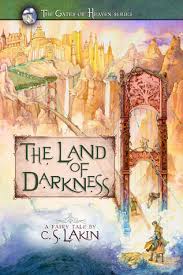 I came up with a premise that could apply to all the stories: seven sacred sites established in the world to prevent evil from getting a stronghold. So the general idea was that each book would feature one of the sites, and each plot revolved around some mystery involving that site.
I came up with a premise that could apply to all the stories: seven sacred sites established in the world to prevent evil from getting a stronghold. So the general idea was that each book would feature one of the sites, and each plot revolved around some mystery involving that site.
While that was a basic way to link my books together, I needed a larger story scope. So from my brainstorming sessions, I came up with a simple concept that required a plot to play out beyond my individual novel storylines.
I decided that by the last book, “evil” will have attacked and destroyed the sites, some of which had already been torn down or broken apart, allowing evil to grow 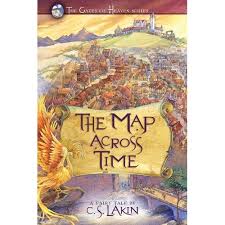 stronger over the centuries. But with a focus on a build to a climax that would be resolved in the last book, I stretched the basic novel structure over seven books.
stronger over the centuries. But with a focus on a build to a climax that would be resolved in the last book, I stretched the basic novel structure over seven books.
So what I did, essentially, is follow traditional plot structure for each book, then do the same for the series in general. By the sixth book, everything is in place for this big climax to occur and resolve in the last book. The last book brought all the key characters “on stage” for one final grand act.
While I didn’t have to do this with my series, I enjoyed the challenge of linking all the books together in a much more cohesive way and bringing the series to a big explosive conclusion that drove home my themes woven throughout all the books.
This is just one way a series can be done.
Create a General Outline for Your Series
Whether your book series contains four or ten installments, one of the best ways to stay on top of your plot structure is to create an outline. This way, you’ll be able to clearly define the topics covered in each volume of the book series, as well as recognize which plot aspects from prior volumes need to be referenced and explained.
You might start with a general plot summary. Take a look at this three-book idea I’m pulling out of my head. Note how the overarching plot ideas are sketched in:
- Book One: The hero leaves home on a quest to find a hidden treasure that dragons stole from a king centuries ago. This treasure includes something vital for the kingdom to survive, maybe a magical weapon that will defeat their tenacious foes. At the climax, after many dangers, he finally discovers the treasure and vanquishes the old dragon protecting the treasure. But . . . as he makes to leave, he finds a clutch of dragon eggs that are hatching. He must return home, but he feels strangely bonded to the babies because of something the dying dragon did to him. He leaves but knows he must come back.
- Book Two: Hero has returned to get the baby dragons. Readers are quickly (briefly) caught up with the salient points of book one while the action is in full swing at the start of book two. Hero is compelled to raise the dragons, but there is danger. If they are found, they will be killed (because book one set up the hatred and fear of dragons in his land). So his new plot goal for this book is to find a safe haven for the dragons. In the midst of all this, that weapon he returned to the king doesn’t work (for whatever reason), and so the kingdom is in danger and threatened by enemies about to invade. Hero saves the dragons and relocates them by the climax of the book (reaching the plot goal for this installment), but now he returns home to find his kingdom under attack. And the king doesn’t know how they will best the enemy. Hero realizes their only hope is his dragons.
- Book Three: Hero tells the king the dragons are their only hope, which results in his banishment. He flees as his kingdom is attacked. Through many obstacles and dangers he finally reaches his dragons, who are now strong and powerful. Determined to save his kingdom, he returns with them, helps fight the enemies, and learns the secret of the treasure he had originally sought. The treasure lies in the bond between man and dragon, and through this realization and then using this bond, the hero prevails and saves his kingdom. The resultant praise and restoration to favor ensues, along with the acceptance of dragons back into their honored role in the kingdom.
Okay, well you can guess I’m a huge fan of How to Train Your Dragon. But I hope you get an idea here or how you can start outlining both your individual books in your series as well as an overarching plot that gets resolved in the last book.
Each of the three novels has a specific complication and plot resolution. In order to flow smoothly toward resolving the overarching plot for the series, each new installation will need to reference backstory from the preceding volumes.
Don’t Let Your Plot Structure Slog into a String of Scenes
Characters and underlying plots in a book series don’t and shouldn’t remain static; if they do, your readers will get bored and abandon the series. The perfect novel series must strike a balance between new developments and familiar information. It’s important to reiterate important plot points from previous novels and space them logically throughout the new book instead of doing an info dump in the first scenes.
One pitfall common to many amateur novels is the failure to provide a build in plot and complications. Usually this is because the writer isn’t using strong novel structure, failing to build the story around the protagonist’s reaching her goal at the climax.
What ends up, then, is a novel that is just a string of scenes, of ups and downs the character experiences, which feel purposeless and random. This is also a big pitfall for series. Without that clear specific plot goal for each book, a series can end up feeling a whole lot like the character is just wandering from one adventure to another without much purpose.
And if that character doesn’t really learn, grow, or change in a new and different way in each book, the series can feel tedious and repetitive.
It’s important to remember a novel isn’t just about plot. A great plot can only go so far. A novel needs rich characters that undergo change. So part of that outlining process can include ways in which the character grows and changes (and why and how that takes place) in the midst of the plot.
Think not just how you want one book’s plot to change your character; picture how she is at the start of the series: what her big problem is, her deepest dream and goal, her greatest fear. Then envision her at the very end of your series. Ask: How has she changed? How has reaching this point (the end) in the story a satisfying, important, climactic moment for her?
Again, it may be that your series isn’t much about character arc. Hercule Poirot is perfect (in his own opinion) and he doesn’t need to change one bit, thank you (and thank you, Agatha Christie). But even a mystery series, such as Elizabeth George’s, can have characters grow, suffer, learn, and change over many volumes and years. To me, that change makes any series all the richer.
So I hope this brief look at series gives you some ideas for your own, and helps you keep in mind the key points to a successful series.
What bothers you about some series? Do you like it when the ending leaves you hanging? Do you want the plot to resolve in each book?


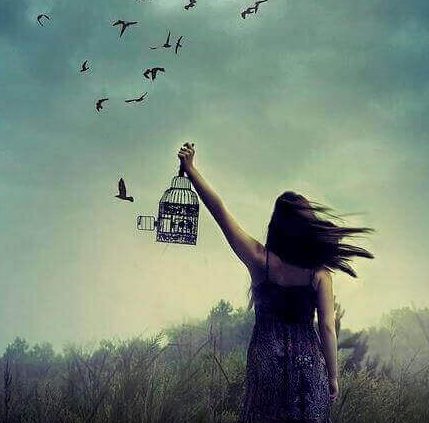
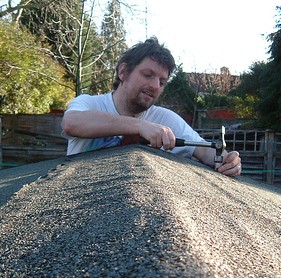

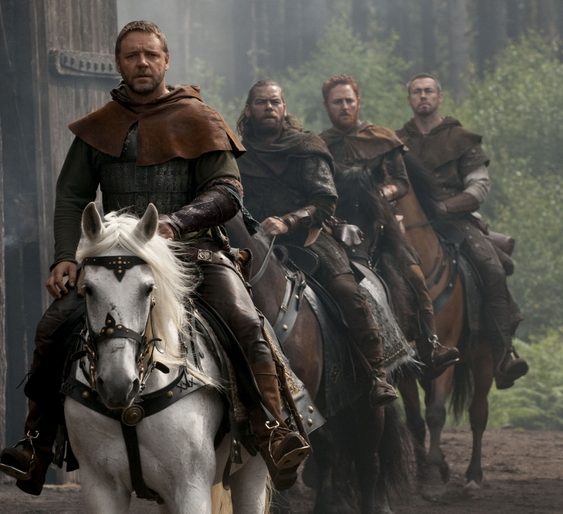





Perfect timing! I’m just about to finish a rough draft of what I hope to be the 1st book in a 3 book series. My first book was a stand alone and writing a series is a whole different venture for me. I needed some guidelines – thank you!
oh my goodness, yes! i wrote my debut novel with nary a notion of a sequel, let alone that it was the first in a series of three! but lo and behold, when i looked, written right in were two particular places that point straight to the second book! and both of them set up the premise for book three, which resolves the “unsavory” issue! (the series is the “unsavory heritage”) i’m amazed how this all is coming together—and love what i do!
My novel is currently being written as a potential trilogy. That being said, I left the ending pretty much self contained since I think it is important for the first book to have some sort of resolution.
I view trilogies as really one large story broken up into three acts.
Book 1’s job is to set up an initial conflict (that gets properly resolved) but leave the reader hungry for more. Book 2 gets into the real crux of the matter and should leave the reader dying for Book 3 to see the resolution. Of course, Book 3 is like Act III, providing the resolution to the overall story.
I love TV shows where each episode is a self-contained capsule but there is a significant over-arching plot question also. And I love series of books for the same reason. My own first novels are a trilogy. The trickiest thing for me was to drop enough puzzle pieces in books one and two that I would need for three when I didn’t fully know the plot of the third one, just a general idea of what happened.
I like the ending of a novel in a series to feel like an ending until I read the first page of the next one and realize then all the issues still hanging in the balance. One of my former favorite novelists was good at endings but he literally got the backstory from earlier books in by copying parts of his first novel into his later novel. Annoying!
Such great advice! So many important things to keep in mind. I am working on my second book now and agree that it is important that each book has its own plot that resolves. 🙂 Thanks for sharing!